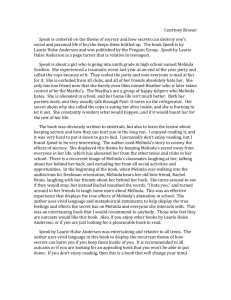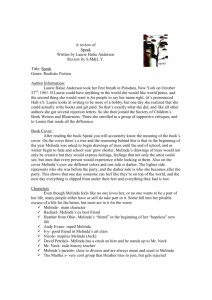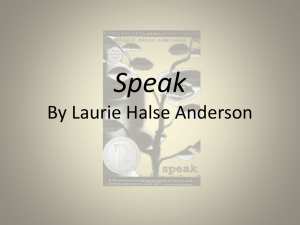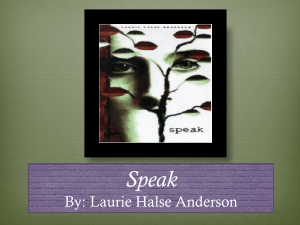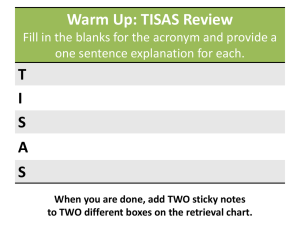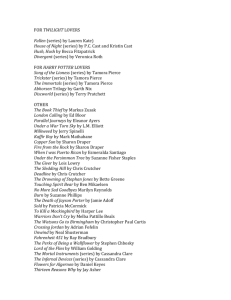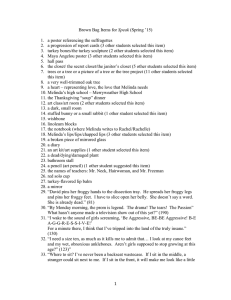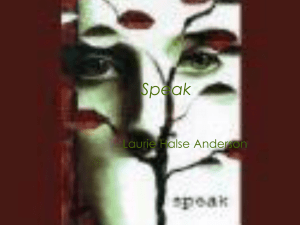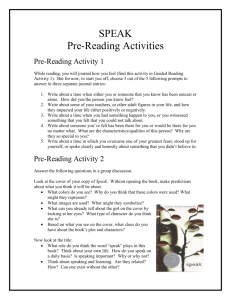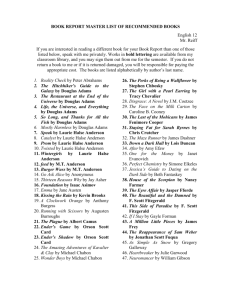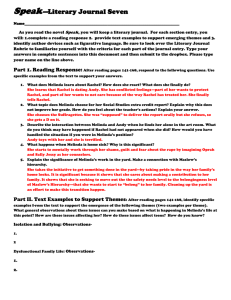Introductory Paragraphs Speak Samples My Copy
advertisement
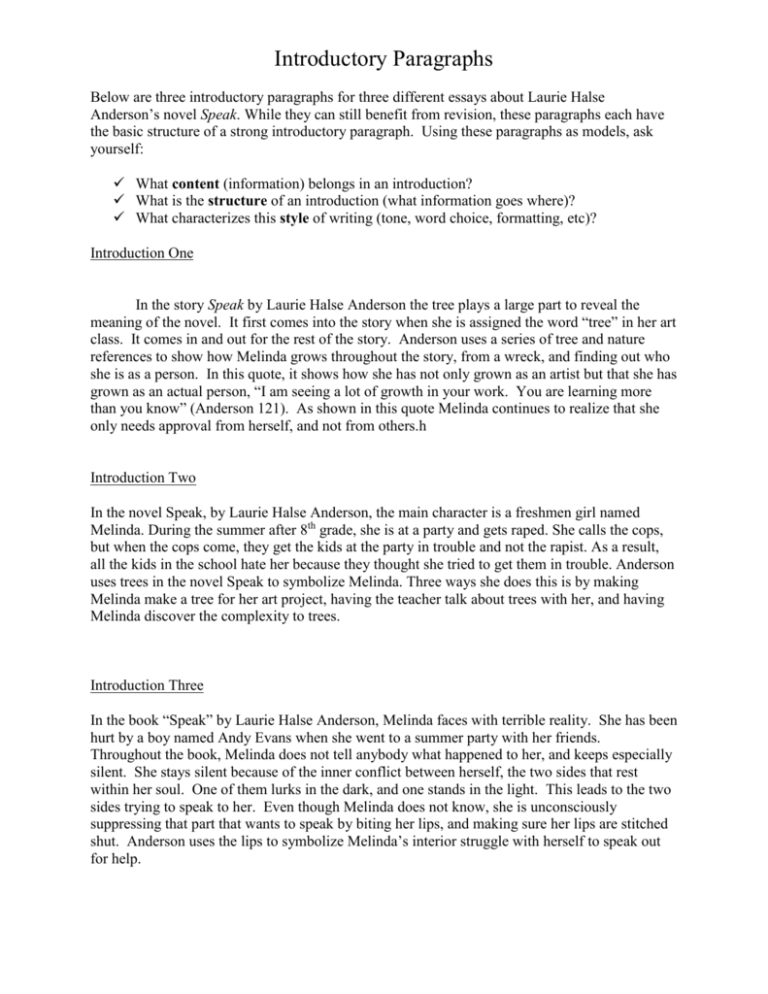
Introductory Paragraphs Below are three introductory paragraphs for three different essays about Laurie Halse Anderson’s novel Speak. While they can still benefit from revision, these paragraphs each have the basic structure of a strong introductory paragraph. Using these paragraphs as models, ask yourself: What content (information) belongs in an introduction? What is the structure of an introduction (what information goes where)? What characterizes this style of writing (tone, word choice, formatting, etc)? Introduction One In the story Speak by Laurie Halse Anderson the tree plays a large part to reveal the meaning of the novel. It first comes into the story when she is assigned the word “tree” in her art class. It comes in and out for the rest of the story. Anderson uses a series of tree and nature references to show how Melinda grows throughout the story, from a wreck, and finding out who she is as a person. In this quote, it shows how she has not only grown as an artist but that she has grown as an actual person, “I am seeing a lot of growth in your work. You are learning more than you know” (Anderson 121). As shown in this quote Melinda continues to realize that she only needs approval from herself, and not from others.h Introduction Two In the novel Speak, by Laurie Halse Anderson, the main character is a freshmen girl named Melinda. During the summer after 8th grade, she is at a party and gets raped. She calls the cops, but when the cops come, they get the kids at the party in trouble and not the rapist. As a result, all the kids in the school hate her because they thought she tried to get them in trouble. Anderson uses trees in the novel Speak to symbolize Melinda. Three ways she does this is by making Melinda make a tree for her art project, having the teacher talk about trees with her, and having Melinda discover the complexity to trees. Introduction Three In the book “Speak” by Laurie Halse Anderson, Melinda faces with terrible reality. She has been hurt by a boy named Andy Evans when she went to a summer party with her friends. Throughout the book, Melinda does not tell anybody what happened to her, and keeps especially silent. She stays silent because of the inner conflict between herself, the two sides that rest within her soul. One of them lurks in the dark, and one stands in the light. This leads to the two sides trying to speak to her. Even though Melinda does not know, she is unconsciously suppressing that part that wants to speak by biting her lips, and making sure her lips are stitched shut. Anderson uses the lips to symbolize Melinda’s interior struggle with herself to speak out for help. Content: Based on these three examples, what kind of information should always be included in an introductory paragraph? Name of book Name of author Topic – helpful if this is clarified somewhere early on in paragraph (symbol, theme, character stuff) Relevant background information Thesis statement Structure: Think of the introduction as a three-part paragraph. What information should be in each of the three parts (beginning, middle, and end) of an introductory paragraph? 1. Topic (what you’re writing about) 2. Relevant background info 3. Thesis statement Style: What else do these paragraphs have in common? What do you notice about this style of writing (called analytical writing)? Is there anything about them, stylistically, that you know should be changed? Formal language (and standard grammar and punctuation) no slang no contractions third person – (no I, me, you) active voice
